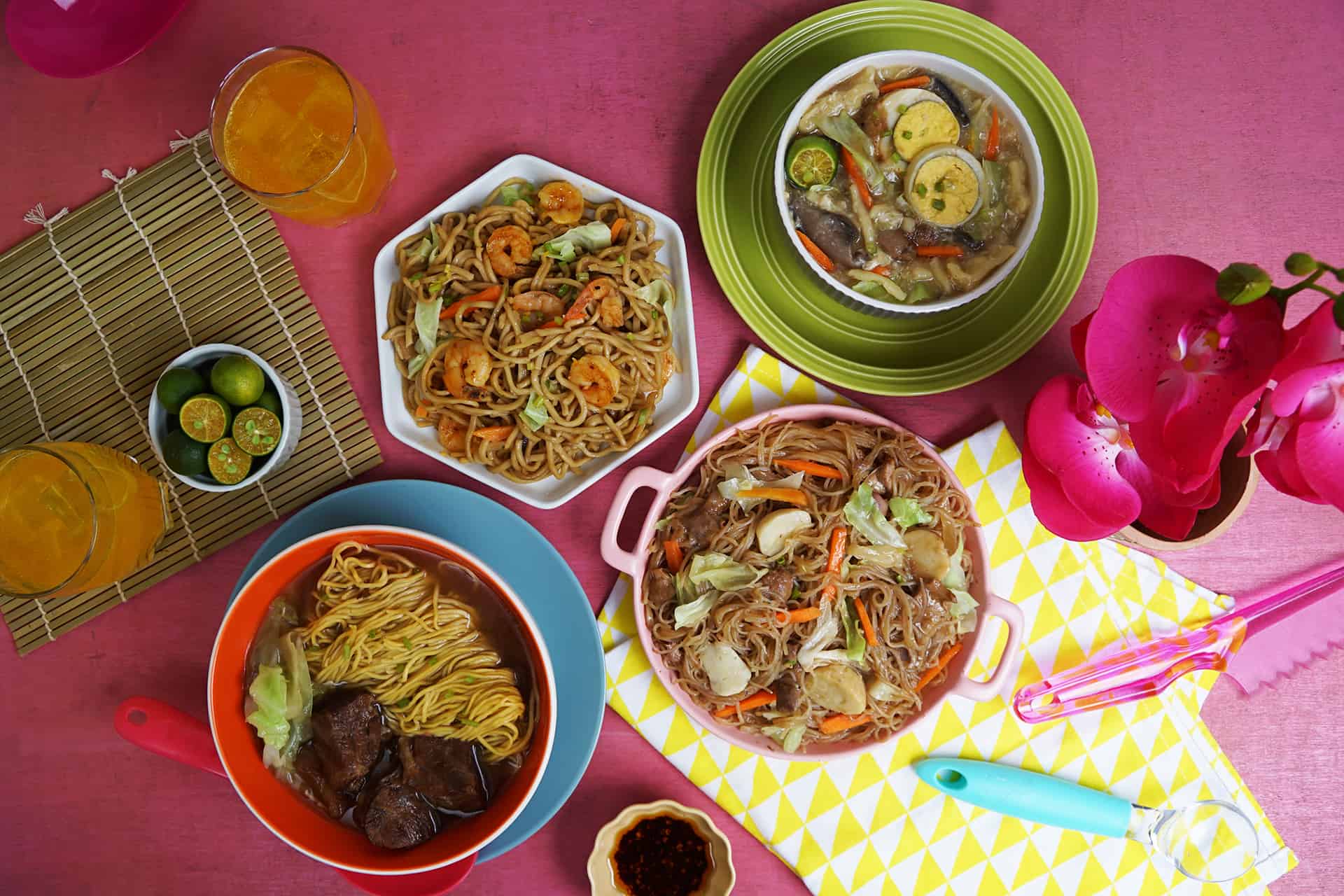
You’ll never find pancit canton in China.
Can you believe that pancit canton is endemic to the Philippines? Sure, you’ll find a plethora of noodle dishes in China and other Asian countries, but if it’s pancit canton you are looking for, your best bet is to visit a Filipino home or restaurant.
Though it is often overlooked as commonplace, pancit is a strong representation of Philippine cuisine. It is a part of our everyday lives, with the instant variety making a constant appearance on many households’ dining tables. It is a part of celebrations, ranging from fiestas to birthdays, where the dish is hailed as a symbol of longevity. It is a part of every town, city, and province, where its own version is created and revered. Pancit is as worthy a torchbearer as adobo or sinigang, so much so that the esteemed food writer Doreen Fernandez had this to say: “The noodles of our lives are strands of history, woven into our daily lives and our feasting.”
Truly, pancit is a storied dish most likely brought to the shores by Chinese merchants. Pancit is actually a poor man’s dish. “Pancit comes from the [Hokkien] word pian-e-sit, which literally means food that is convenient to cook,” shares Carmelea Ang See, Director of Bahay Tsinoy Museum in Intramuros, Manila. Pancit did not explicitly mean a noodle dish; rather, it was any fast food item, prepared and served swiftly. These were served at panciterias, which were started to cater to workers in the tobacco industry. “Factory workers have to eat. So what do the Chinese do? They stay outside and serve food,” shares Ang See.
Some of the popular noodle dishes then remain to be well known to this day. There is the mami, composed of “ma,” meaning meat that is usually pork, and “mi,” meaning noodles. This was the common way of naming pancit dishes during that time—using “mi” plus a description of its cooking process, main component, or appearance.
The “lo” in lomi alludes to the long stewing process of the “mi.” The “sua” in misua refers to the thinness of the noodles. Makimi, a soupy version of pancit, translates to meat with cassava starch, an ingredient used to thicken the dish. The popular pancit bihon, meanwhile, stems from “bi” meaning rice, as the noodle variety is typically made of rice flour. Bachoy, which is now a popular noodle soup from Bacolod, was merely a soup of “ba” and “choy,” meat and water.
Pancit’s appeal eventually grew further: “It became popular towards the end of the Spanish period and especially towards the American period. Some Chinese food became sosyal (fancy) including camaron rebosado, pinsec frito, and chorizo de macau,” adds Ang See. This is when the noodle dish went from being a mere economical option into a celebratory fare.
“Changes in pancit are purely Filipino,” says Ang See. The pancit traveled from north to south of the archipelago, creating as many varieties of pancit as the country’s islands. From here on, pancit became indigenized—adopted and adapted to suit local tastes, ingredients, techniques, and even ways of consumption. “It’s just really the Philippines that takes all these pancit dishes and makes [them] so rich,” says Ang See. Even the squeeze of calamansi atop the pancit is purely a Pinoy trait.
Filipinos have made this Chinese influence truly their own. The pancit sits well among local palettes because it’s versatile, economical, and flexible. To this day, pancit continues to develop new variations, whether through ways of making the noodles, ways of cooking the dish, or ways of reflecting the times.


Recent Comments